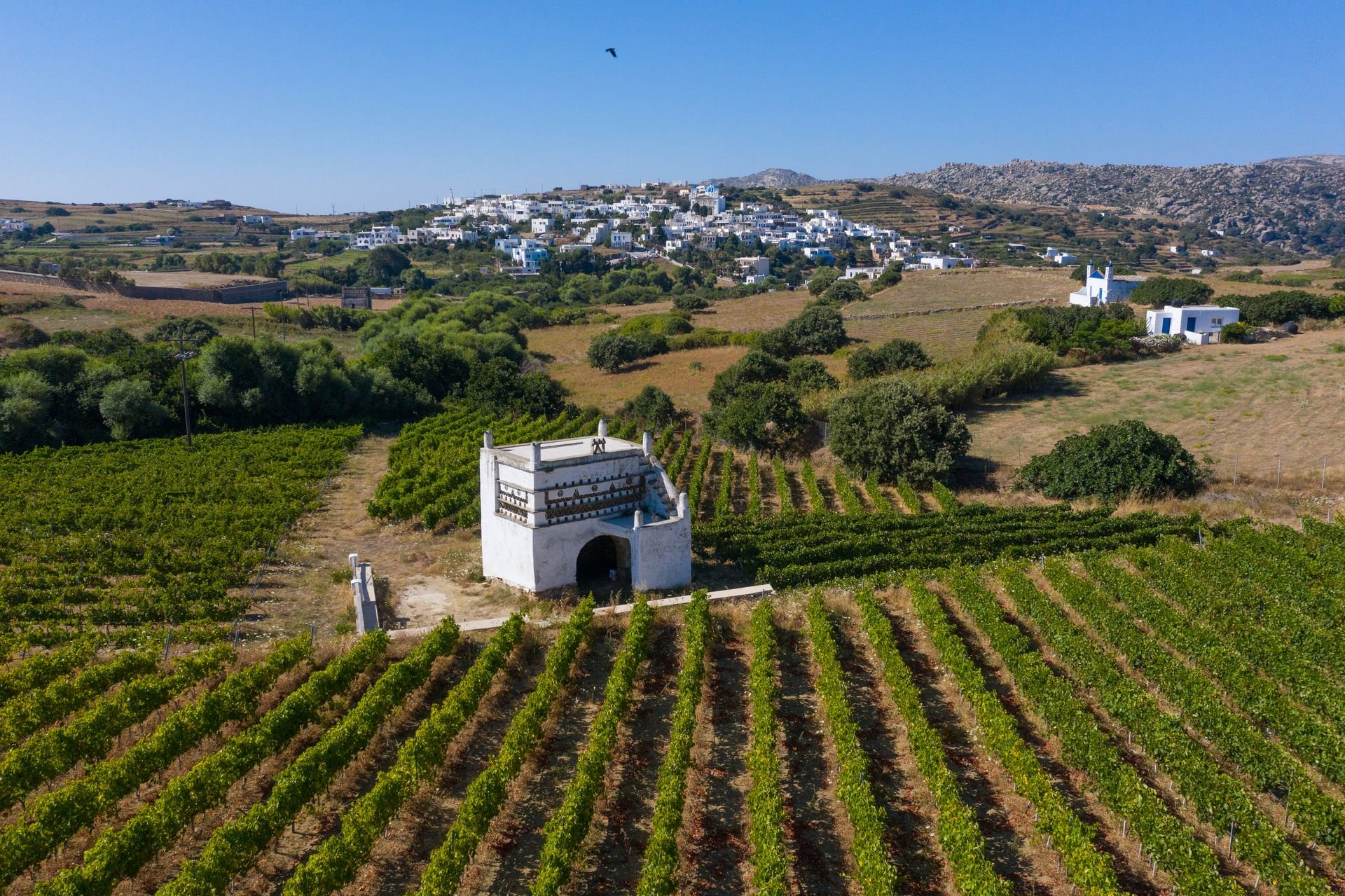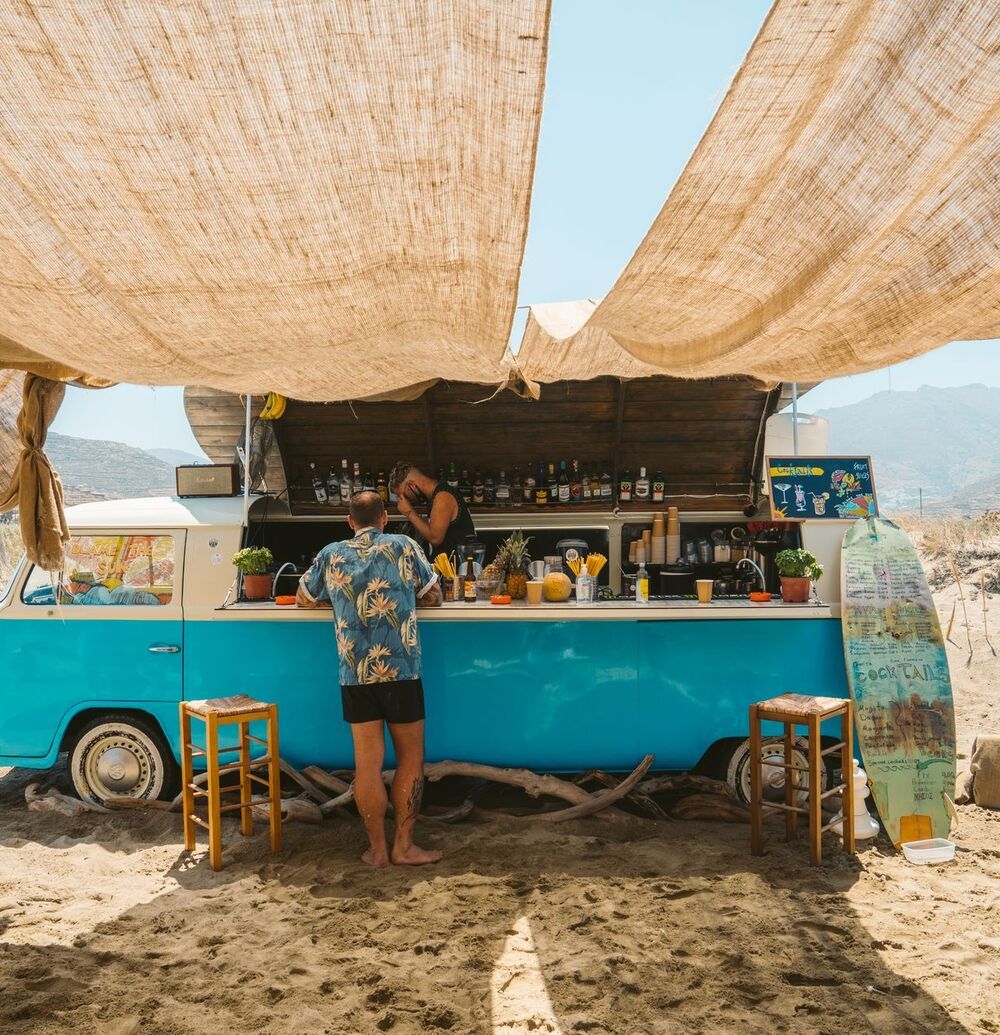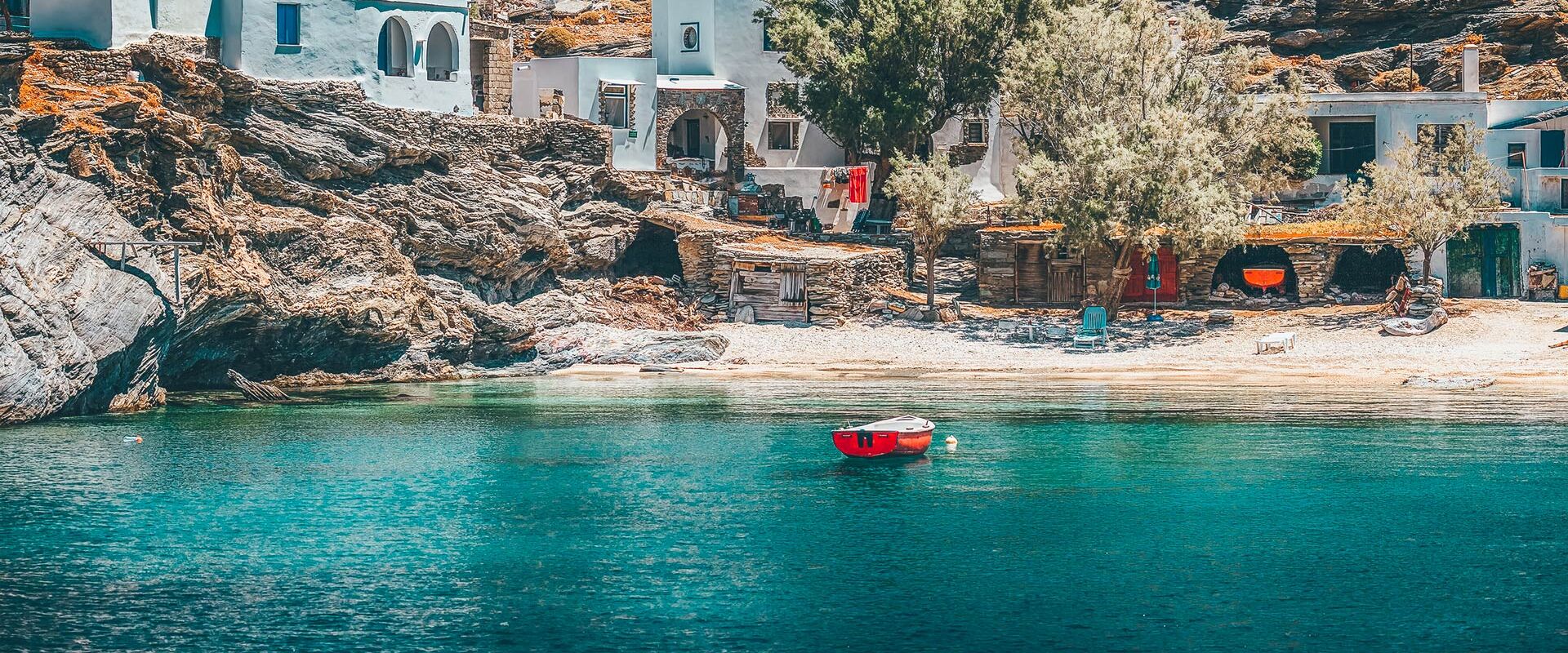So much of Tinos’ fame has been built around its religious centrepiece, the Panagia Evangelistria church, a beacon in the Orthodox faith. But what if you were told that this Cycladic isle has more than 60 villages, seemingly as many beaches (fully organised and secluded) and a living legacy of master marble sculptors? Oh and it’s also an indisputable foodie destination! Sound interesting? Well, take a look at our bucket list of top things to do on your holidays in Tinos and decide for yourself.
Hora and Panagia Evangelistria
It’s only right that No.1 on your list of things to do in Tinos is Panagia Evangelistria (Our Lady of Tinos or the Church of the Annunciation, as it’s also known). It’s your first taste of Hora (the main town) and your introduction to Tinos’ artistic side, housing a gallery of 120 works of great Greek and foreign painters.
Beyond that, exploring the streets of Hora, you’ll find plenty more little churches, fountains and cobbled alleys, as well as neoclassical buildings and villas with beautiful gardens. And of course the many shops and tavernas you’ll be returning to.you
The marble craft of Pyrgos
From the workmanship displayed in the fountains and churches and the intricate patterns on front many of the houses, you’ll understand why Pyrgos is Tinos’ most famous marble village. To get the full picture, head to the Museum of Marble Crafts (just outside the village) and the Panormos Artists Museum (with works of significant sculptors), and you can visit the house of a Tinian sculptor in the Giannoulis Chalepas Museum. Apart from picking up a souvenir in a local store, don’t leave without indulging in a galaktoboureko (a semolina-based filo-pastry pie) or portokalopita (orange pie) in the village square.
Villages you can’t miss
You can’t experience all of Tinos’ villages in one go (something to return for!), so here are some highlights. Ysternia has both a mountainous and coastal side, and the island’s marble theme is evident in the main square. From the old primary school building, the view is like being on a terrace overlooking the Aegean, after which you can head to the coast for breakfast or a coffee.
Panormos is effectively a seaside village of Pyrgos (and a great sunset spot), whilst Volakas is known for the smooth round boulders in and around the village (a geological phenomenon) as well as its basket-weaving tradition.
Full-scale village-hopping
Now you’ve got a taste of it, you’ll probably want to hop to a few more villages. Kardiani has been awarded ‘traditional settlement’ status and has a mixed Orthodox and Catholic population and Falatados is known for its raki and excellent wines. Meanwhile, Dio Horia has an impressive cobbled square, with plane trees and water fountains, alongside whitewashed houses with multicoloured window and door frames. And whilst you’re exploring, look out for the 1,000 or so dovecotes around the island, an indelible part of Tinos’ cultural identity.

Every step, a culinary journey
Tinos’ other religion is food and you’ll be reminded as much every time you eat. Enjoying the local produce is right up on there on any list of things do in Tinos – especially the seafood, meat, vines and fruit & veg. Many products have festivals in their honour (artichokes, wine, honey, raki and oregano) and don’t leave without trying as many local specialities as you can. From family-owned wineries to experiencing the aromas of mint, sage, dittany, thyme and chamomile as you explore the countryside… so much of your visit to Tinos will be a culinary journey.
Exploring the beaches on the north coast
Especially if it’s a still day, it’s worth heading to a beach on the more exposed north coast. You might want something where all your needs are taken care of (sunbeds, umbrellas, tavernas, beach bars etc) or perhaps you want total seclusion. To the northwest are Agia Thalassa (in the bay of Panormos) and Kavalourko (from where you can swim to little Planitis island). And sandy Rohari has a cool beach bar to hang out in. The dirt road to all of them might be a bit bumpy but it’s worth the journey. And over to the northeast is Livada, one of Tinos’ most remote beaches, with a river running by it.
Swimming spots to the south
On windy days, the south coast offers more sheltered beach options. Up the coast, Kalyvia is organised and family-friendly and Agios Petros, Agios Romanos and Ysternia all stand out. Apigania is a fantastic, secluded beach around 8 minutes’ walk down a path from the coast road. Close to town are the fully organised Agios Fokas (the largest beach) and Agios Sostis. And, heading east from Hora, is the super sandy Pahia Ammos.
A hike through authenticity
The last of our things to do in Tinos could occupy your entire holidays. There are more than 150km of signposted hiking paths connecting villages and crisscrossing the island. They take you past archaeological sites, monasteries, Venetian castles and dovecotes (pigeon houses), as well as scenes of classic Cycladic architecture.
Discover the hiking paths of Tinos
Some go in a loop and others follow the coast or head into the hills. It’s up to you what you choose from the Livadi plateau, marble villages or maybe a mountain and sea combo, so you can sneak in a swim at the end.
The boho Instagrammability of Kolymbithra
Right in the middle of the northern coast, Kolymbithra is Tinos’ best-known swimming spot. What a beach! Or, to be more precise, two beaches, Mikri (Small) and Megali (Large) Kolymbithra.
The smaller of the two is the one with the facilities, including a taverna, because it is more shielded from the wind. The larger has a more boho feel to it, with sunbeds and umbrellas made of natural materials and a beach bar that blends in perfectly. Your Instagram feed will thank you.
Top things to do in Tinos
Tinos is an island full of authenticity and hidden pursuits, with a way of surprising even the most seasoned traveller. One thing’s for sure. With such a multitude of beaches, villages, culinary experiences and other things to do in Tinos, you won’t want your first journey here to be your last.


